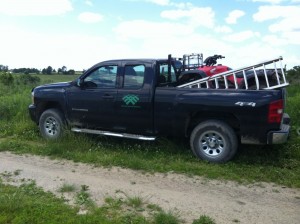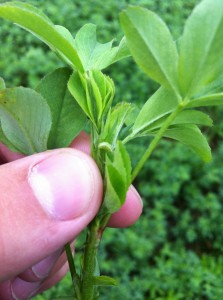For this summer I will be interning with Agricultural Consulting Services, Inc. or ACS for short and their sister company Agrinetix, LLC in Rochester NY. ACS consists of agronomy professionals who handle the crops side of the business and environmental planners that handle the CAFO and LFO regulatory side of the business. I will mainly be working as a field technician with the technical service department of ACS. For the first three weeks I have been working with ACS; meeting employees, training, soil sampling, and scouting.
I was first trained in mapping fields and collecting phosphorus index data. I met with one of the environmental planners and reviewed the field mapping training manual to understand symbols used while mapping and the general procedure for fieldwork. The majority of ACS’s field mapping is for clients that have to follow CAFO regulations. These stipulate guidelines such as manure spreading and where a field may need a setback due to an environmentally sensitive area. To begin mapping, we make a loop around the field on our ATVs with our map and markers close by to begin marking any important areas such as “Water of the State” streams and wetlands. These streams and wetlands are important because a manure setback must be put into place in the client would like to spread manure in the particular field and follow environmental regulations. The setback must be one hundred feet or if there is at least a thirty five foot buffer between the field edge and the wetland or stream then no set back is needed. Also wells are an important thing to pay attention to because they require a setback of one hundred feet. While mapping other data about the field is collected such as slope, row grade, and rock cover. Lastly, the service manager may also ask you to break up the field into different sections based on topography or possible even soil type.
I have also had the opportunity to do some scouting in my first couple weeks of working with ACS. I began by scouting for alfalfa weevil that is a main pest of established stands of alfalfa, which can be detrimental if found in high enough numbers before the first cutting is done. Alfalfa weevil overwinters in NY as an adult and the larval stages starts to appear in fields around early May. They leave shotgun like holes in on the upper leaves of the alfalfa. When scouting for alfalfa weevil we walk through the field and examine five stems in ten different locations within the field looking for damage or larvae. It is also important to note the size of the larvae and the stage of the alfalfa. Once you have sampled in your ten locations you then divide your number of damaged stems by the number of stems you checked, which in the end would be fifty. So if I walked through a field and counted sixteen damaged stems then I would divide sixteen by fifty to determine my percent damage which would be thirty two percent in this example. The threshold for controlling alfalfa weevil in an established stand is forty percent, however just by cutting the alfalfa you can eliminate about eighty percent of the alfalfa weevil present in the field but that should not be assumed and scouting may need to be done again after first cutting to double check the situation.



Speak Your Mind